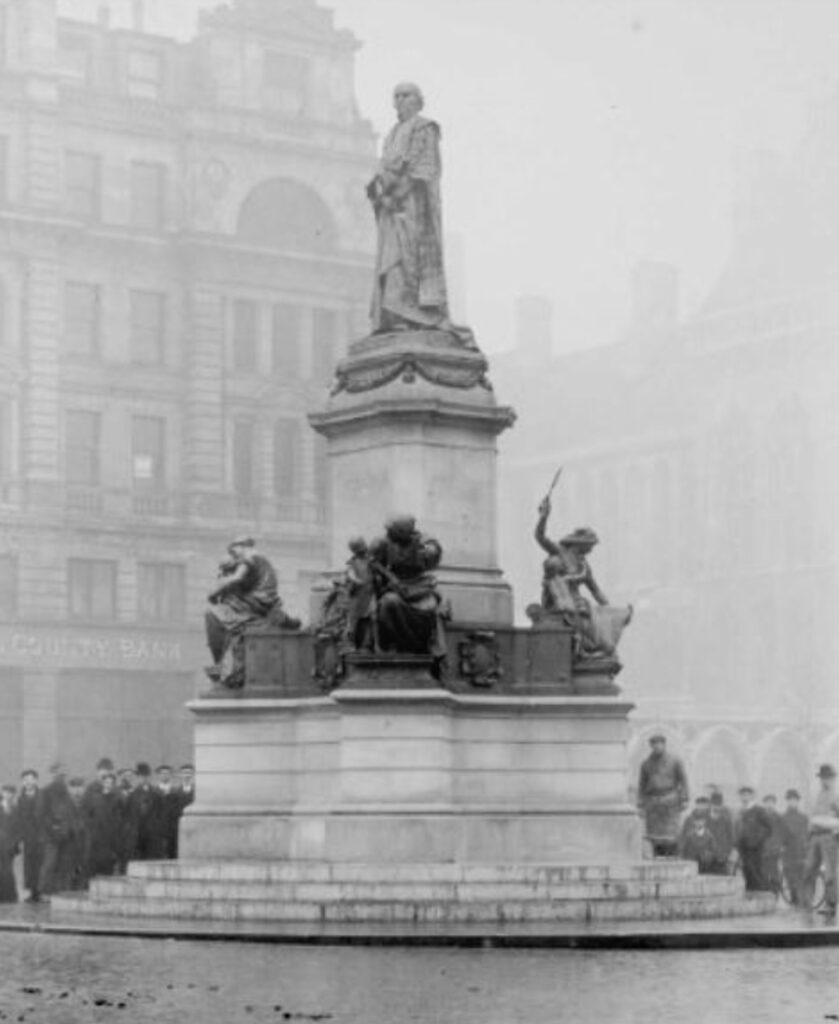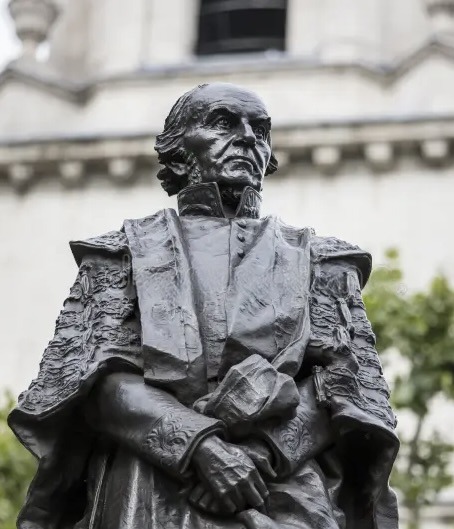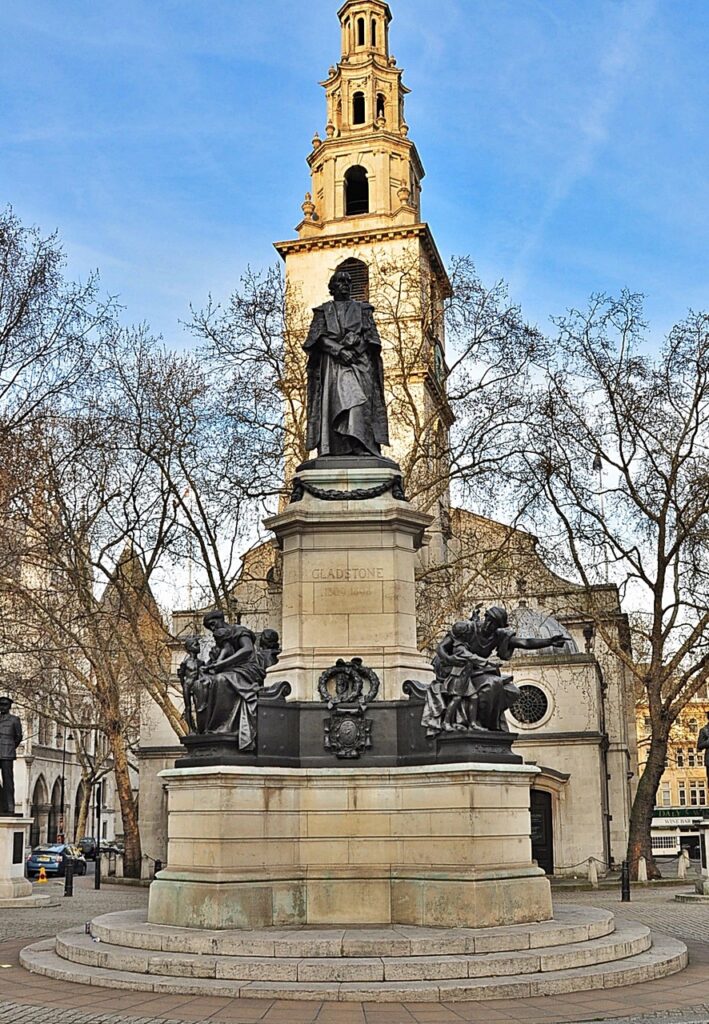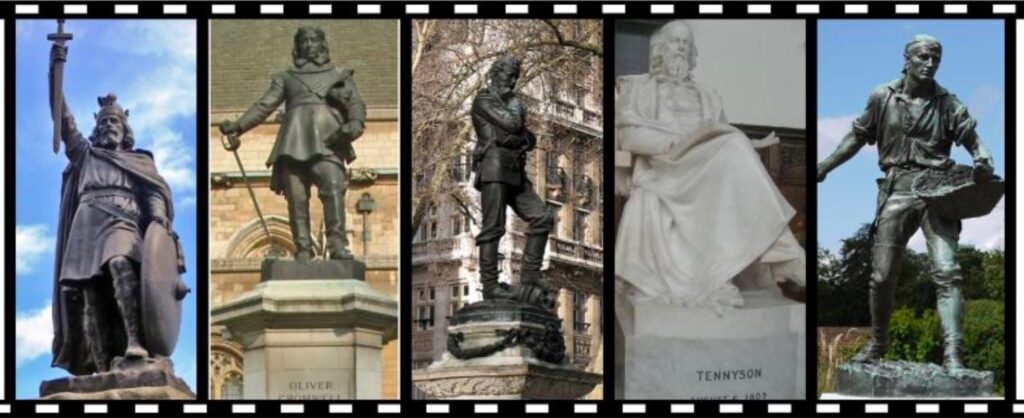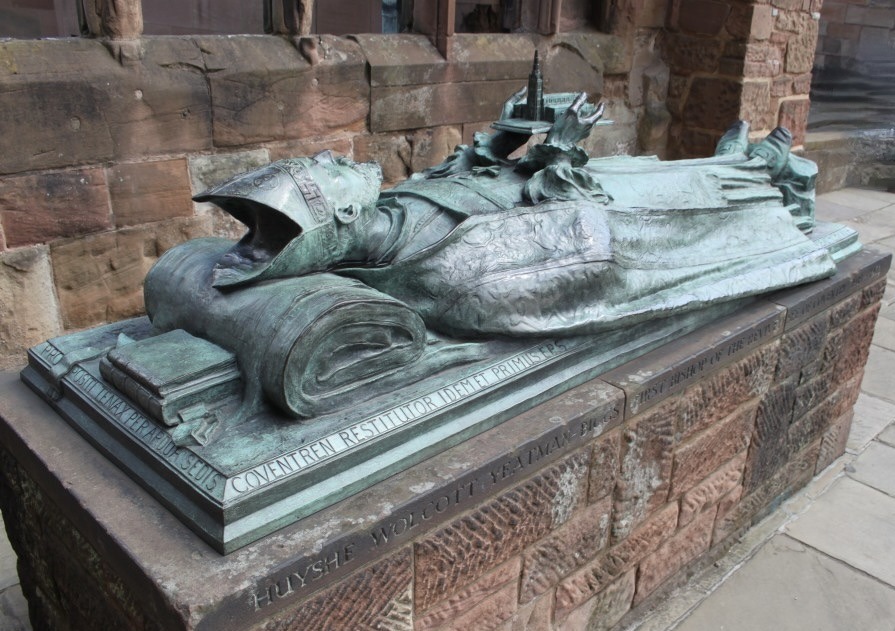
CovSoc founder member Paul Maddocks tells us the story of Coventry’s second cathedral and its first bishop since the reformation, now memorialised in its ruins. Paul writes….
The bronze sculpture on the tomb of Bishop H. W. Yeatman–Biggs was one of the few surviving artefacts after the firebombing of the Cathedral in the Coventry Blitz of 14th November 1940.
Inside the Cathedral ruins is the strikingly realistic form of a bishop lying on a plinth of sandstone, with books, his staff, episcopal robes and a model of the church itself in his hands, all denoting his rank as a bishop.
There are three texts, the original in Latin set into the bronze, the second is smaller and inscribed in italic English text, and the third is in large Roman capitals and again in English and inscribed into the stone base. Together they tell the story of a monument constructed to commemorate the first bishop of Coventry, Bishop Yeatman-Biggs.
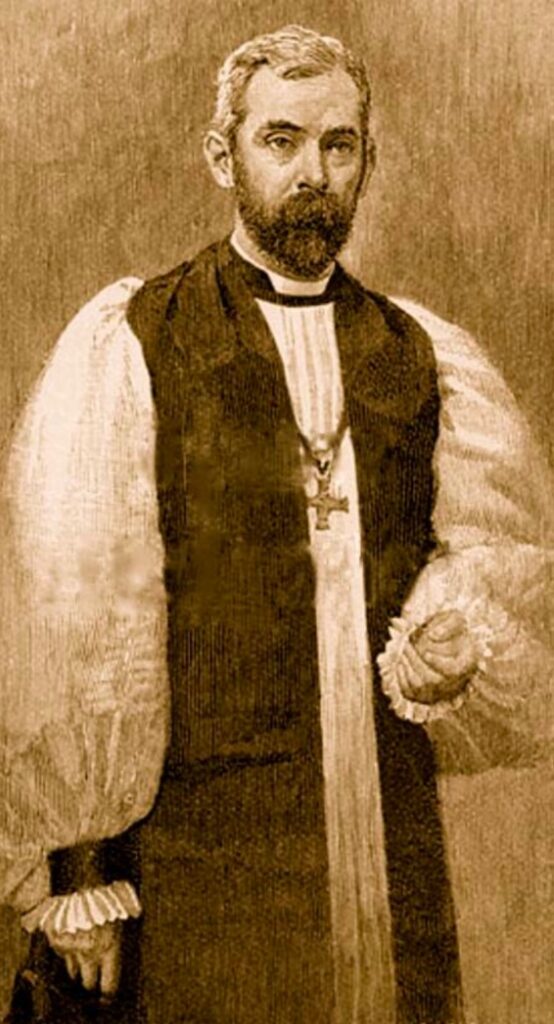
If you look closely at the bronze, you can see where people have been touching it, the fingers, his nose and the model of St Michael’s church are all well-polished. But the most unusual element are the swastika symbols on the bishop’s mitre (hat). This is explained by the fact that at that time the swastika was an ancient auspicious symbol of good fortune and wellbeing. This was until the 1930s, when the German Nazi Party adopted the swastika. So, perhaps it is quite ironical that it was the Nazi’s who bombed the cathedral.
St. Michael’s church was designated as a Cathedral in 1918; just after the First World War. It has been a church for a lot longer. Its origins go back to Norman times, when it was built as a Chapel to Coventry castle in the eleventh century. It grew to be one of the largest churches in England.
It’s interesting that as early as 1818 St. Michael’s was regarded as a National Monument, which would require extra funds for its upkeep beyond its local parish. This was especially important as it was one of the largest parish churches in the country.
There had been some local pressure for a separate Coventry diocese from 1860. But it took until 1908 when the Bishop of Worcester, H. W. Yeatman – Biggs, constituted St. Michael’s as a collegiate church or ‘pro-cathedral’.
But the First World War interrupted the process, and it was not until 1918 that the Bishopric of Coventry was formally created by Act of Parliament and St. Michael’s church was elevated to Cathedral status. Bishop H. W. Yeatman – Biggs became Coventry’s first post Reformation bishop.
Coventry’s first Cathedral had been St Mary’s, part of the Priory, but it was completely dismantled as part of the Reformation under King Henry VIII.
Unfortunately, Bishop Yeatman – Briggs was only a Bishop of Coventry for four years. He died in 1922 at the age of 77. During his short time in Coventry, he had been plagued by a bad press when he was accused of influencing a vulnerable pensioner into leaving him her assets. No evidence was found to support this accusation, funds had gone into the Parish for good works from the said pensioner but it was a lot smaller than had been stated.
Huyshe Wolcott Yeatman was born in 1845, he added the name Biggs when he inherited the estate via his mother when his elder brother died in 1898, and he added the name Biggs by Royal licence. After his death he was buried in the Coventry Cathedral and a bronze effigy was commissioned, it was made by Hamo Thornycroft a famous sculptor of his time.
Thornycroft had done many famous memorials. One was for the British statesmen W. E. Gladstone P.M. a bronze sculpture made in 1905 and unveiled on 4th November 1905. It is the fourth largest monument for a single person in London after Nelson’s column, the Albert memorial, and Queen Victoria which is in front of Buckingham Palace.
Hamo Thornycroft has done other public statues around the country including Alfred the Great, Oliver Cromwell, General Gordon, Alfred Lord Tennyson and a ‘Sower’ in Kew Gardens.
